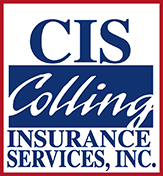Thousands of people drive each day on the road who are high risk drivers. No insurance carrier wants to sell someone who meets the criteria of a person who is careless behind the wheel. When should I buy vehicle insurance because it is the cheapest? Companies are popping up like mushrooms all across the nation to reach this market. Only purchase cheap automobile insurance when it is difficult to find someone to insure you. It is cheap auto insurance because it meets to the minimum requirements required by the state.
Cheap auto insurance does not cover a lot of the basic benefits of other policies. If you ever get hit by someone who has cheap insurance, they probably will not have enough coverage in their policy against your loss. Should I buy vehicle insurance because it is the cheapest? It is not a good deal for all involved. In fact, you may want to purchase a higher benefit package from another carrier in case you have more loss than what you can recover. If low rates are a concern for your budget, you do not have to sacrifice good quality coverage. Think of your family when you purchase insurance and not your budet first. We can assist you with the best automobile insurance for you at low rates, get a free quote today!




 Email an Agent
Email an Agent


 Click to Call
Click to Call Get Directions
Get Directions